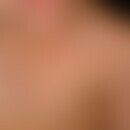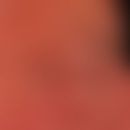Synonym(s)
DefinitionThis section has been translated automatically.
Macrogol ointment, also called Unguentum polyethylenglycoli, is an (anhydrous) hydrophilic (hydrophilic in this context means that the base is readily miscible with water), lipid- and water-free ointment (type water-absorbing ointment), which is composed of equal parts of a liquid (Macrogol 300) and a solid part (Macrogol 300) (see recipe).
Macrogols are polyethylene glycols with good adhesion and distribution properties on the skin. If water is added to the base, the ointment increasingly liquefies. Above 5% water this effect is already noticeable. Macrogol ointments do not have an occlusive effect and can be easily washed off with water. On the other hand, macrogol ointments dry out the skin due to their osmotic activity.
Field of application/useThis section has been translated automatically.
Due to these properties, they are particularly suitable for the treatment of diseases of the hairy scalp (easy to spread, can be washed out with water). Macrogols have a pronounced dissolving power for active ingredients. On the one hand, this opens up a wide therapeutic range. On the other hand, this high affinity to active agents leads to their delayed release. Macrogole ointments are also used for wound treatment (Cave: the sensitization rate of polyethylene glycols is estimated to be very low).
You might also be interested in
Dosage and method of useThis section has been translated automatically.
The following active pharmaceutical ingredients can be well incorporated:
- Clotrimazole to 2% (NRF 11.50.)
- dithranol up to 4% (NRF 11.53.)
- povidone-iodine up to 10% (NRF 11.42.)
- Salicylic acid up to 5%.
- Lidocaine or tetracaine dissolve in macrogol ointment up to 5%
Undesirable effectsThis section has been translated automatically.
Phenolic active ingredients (e.g. salicylic acid >5%) liquefy the base.
Recipe(s)This section has been translated automatically.
The macrogol ointment is to be formulated as "Macrogol Ointment DAC".
Formulation:
- Macrogol 300,0 50,0
- Macrogol 1500 ad 10,0
LiteratureThis section has been translated automatically.
- Wolf G (2013) Polypragmasia in active ingredients. dermatologist 64: 418-419




